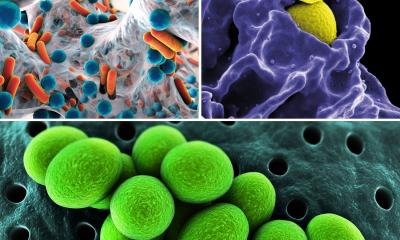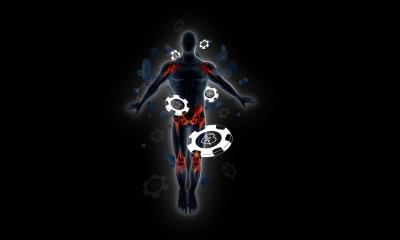Antibiotic-loaded bone cement
Reduction of infection risk in femoral head fractures by 66%
Good news for World Antibiotics Day on November 18th. As local substances carriers, antibiotic-loaded bone cements from Heraeus help in the battle against implant-associated infections in orthopaedics and trauma surgery to prevent infection. This is demonstrated by a new randomised study from Great Britain in which the use of double-loaded antibiotic bone cement following femoral head fracture led to a significant 66% reduction in infection risk with primary hip arthroplasties, as compared with bone cement with only one antibiotic. The COPAL® G+C antibiotic-loaded bone cement developed by Heraeus Medical contains antibiotics whose spectrum of activity combats the germs typically responsible for infections in the implant.
Antibiotic-loaded bone cements are mainly used in endoprosthetics to prevent infections. But antibiotic-loaded bone cements are also well established as substances carriers for the application of local antibiotics in therapeutic support of infected knee and hip joint implants. The bone cement allows the targeted release of a highly effective level of antibiotics - directly where it is needed and without a significant systemic burden to the patient. Accurate and fast microbial identification is required here - only then can the doctor develop the right therapy concept and a bone cement be selected to release the suitable antibiotic in the necessary combination and concentration.
Heraeus Medical has worked intensively over recent years on improving the therapy of implant-associated bone and joint infections and targeted diagnostics to lay the foundation for a patient-specific therapeutic approach. Together with Curetis AG, Heraeus has developed a special cartridge to detect a broad range of germs, including low virulent germs and germs in biofilms and any antibiotic resistances that may exist within five hours - in contrast to conventional microbial methods that can take up to 14 days.
"The treatment of infections in the implant can be significantly improved today", says Dr. André Kobelt, Managing Director of Heraeus Medical GmbH. "This progress has become possible through rapid and targeted diagnostics and improved understanding and knowledge of the medical personnel on how to deal with and fight infections. This primarily includes the targeted use of antibiotics as well as antibiotic-loaded bone cements. Patients are often spared the burden of a further surgery, the risk of complications and long-term effects drops and this development is also advantageous in consideration of health economics aspects.”
Background: World Antibiotics Day
November 18th is World Antibiotics Day. The main objective is to direct attention to the targeted use of antibiotics. The unspecific use of antibiotics is, in fact, one of the main reasons for the propagation of multi(resistant) germs and antibiotic resistances. Even now, more than 700,000 deaths per year are attributable to resistant pathogens.
These germs for which one or more antibiotics no longer work are not only a challenge in acute diseases. In orthopaedics, they cause considerable problems in infections of hip or knee implants. Typical symptoms are pain, loosening of the prosthesis and inflammation. The majority of acute infections after joint replacement occur within two years. However, chronic infections can also arise after several years.
Often the operation has to be repeated in order to treat the infection. This involves removing the infected prosthesis and treating the infection with antibiotics before a new prosthesis can be fitted. The treatment of infection is not easy: Chronic joint infections are usually caused by slow-growing germs. This creates problems, as the classical diagnostic and therapeutic methods only work reliably with fast-growing germs.
18.11.2016






